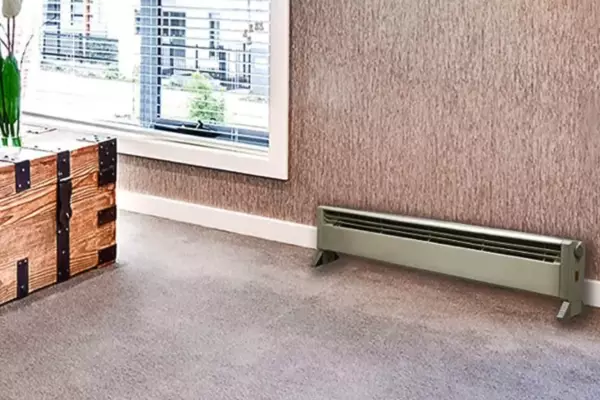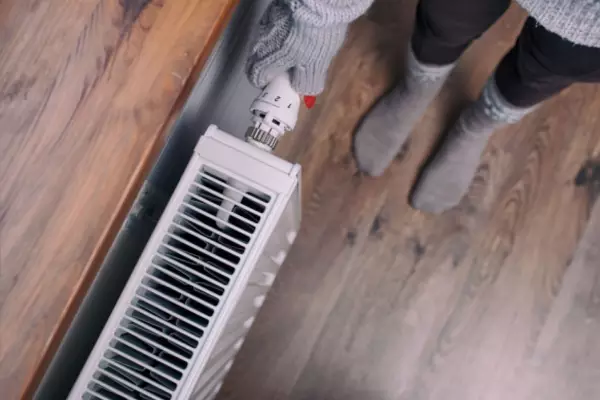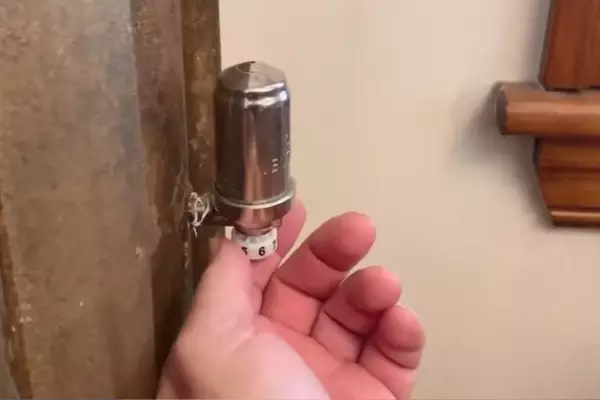Baseboard heaters, often the unsung heroes in our homes, provide us warmth when the chilling winter air creeps in. But managing these heat providers becomes crucial when you wish to control your home’s climate or save energy.
Dealing with baseboard heaters, specifically turning them off in one room, is no rocket science. It simply requires a fundamental understanding of how these heaters function, how to handle the knobs, and how to tackle issues like a heater refusing to turn off.
The control of room temperatures with baseboard heaters can be an effective method to improve energy efficiency. The ability to manage individual room temperatures means you can heat the rooms in use while saving energy in the unoccupied ones.
Contents
Baseboard Heater Basics
What is a Baseboard Heater?
A baseboard heater is a compact electrical device installed near the floor of your rooms. Its purpose is to provide a continuous source of warmth in colder climates or during winter months.
How Does a Baseboard Heater Work?
Baseboard heaters work on the principle of convection. Heated air rises, and as it cools down, it falls back towards the floor, allowing the heater to warm it again, thus maintaining a cycle of warmth in the room.

How Baseboard Heaters Operate
Operating baseboard heaters involves the interaction of several key components. The heating process largely relies on an element called the thermostat and a control mechanism referred to as the knob.
The Role of Thermostat
The thermostat plays a vital role in the functioning of your baseboard heater. It’s essentially the brain of your heating system, controlling when it turns on and off based on the ambient temperature of the room.
A baseboard heater’s thermostat works on a relatively simple principle. When the room’s temperature falls below the preset level on the thermostat, it signals the heater to start heating. Once the desired temperature is achieved, the thermostat once again sends a signal, this time to turn the heater off.
The flexibility offered by thermostats enables you to set your preferred temperature for different times of the day. For instance, during nighttime or when you’re away from home, you can set a lower temperature to save energy.
About Heater Knobs
The knob on a baseboard heater allows manual control over the heating process. Turning this knob can either increase or decrease the heat output, providing instant heat adjustment.
The knob works in conjunction with the thermostat to manage the room’s heat levels effectively. When you turn the knob to increase the temperature, the heater operates until it reaches the set point, after which the thermostat kicks in to maintain the desired temperature.
Conversely, when you lower the temperature setting using the knob, the thermostat ensures the heater switches off once the ambient temperature falls below the new setting.

How to Turn On Baseboard Heater with Knob
Operating your baseboard heater might seem tricky at first, but once you understand the process, it becomes straightforward. Here’s a step-by-step guide on how to safely turn on your baseboard heater.
Locate the Heater’s Control Knob
The control knob is usually situated on one end of the heater unit. Depending on the heater model, it may look different, but its function remains the same.
Steps to Safely Turn On the Heater
- Clear the Area: Ensure no flammable objects like furniture, curtains, or papers are in the immediate vicinity of the heater.
- Twist the Knob: Slowly turn the knob clockwise to increase the temperature setting. The farther you turn, the higher the heat output.
- Give it Time: After adjusting the knob, wait a few moments. The heater should gradually start emitting heat.
Dealing with a Stubborn Baseboard Heater
Despite our best efforts, sometimes things don’t go as planned. One such situation is when your baseboard heater refuses to turn off. But don’t worry, with the right approach, it’s an issue you can resolve.
Recognizing the Signs: Baseboard Heater Won’t Turn Off
Understanding when your baseboard heater is acting up is the first step towards addressing the issue. If you’ve turned the knob to the lowest setting or the room’s temperature is higher than the thermostat’s setting, but the heater is still producing heat, it’s a clear sign of a problem.
Common Reasons for a Heater Staying On
Several factors can cause your heater to remain active, even when it’s supposed to be off. Identifying the root cause can help you address the problem effectively.
- Misaligned Thermostat: If your thermostat isn’t correctly calibrated or is faulty, it may not sense the room’s actual temperature, leading to continuous heating.
- Faulty Wiring: Electrical issues, including faulty wiring, can bypass the thermostat, causing the heater to stay on indefinitely.

How to Turn Off Baseboard Heater with Knob
Switching off your baseboard heater should be as simple as turning it on. Here are some steps to ensure a safe and efficient process.
Preparing to Turn Off the Heater
Before proceeding with turning off your baseboard heater, you must take some precautionary measures.
- Clear the Area: Remove any items that could melt or burn from the heat emitted by the heater.
- Check the Heat: Ensure the heater isn’t too hot. If it is, wait for it to cool down before proceeding.
Detailed Steps to Follow
- Locate the Control Knob: Identify the knob that regulates your heater’s temperature.
- Turn the Knob: Slowly twist the knob counterclockwise, reducing the heat setting to its minimum.
- Assess the Situation: If the heater continues to emit heat despite the knob being at the lowest setting, it could indicate a faulty thermostat or wiring.
Baseboard Heater Maintenance
Keeping your baseboard heater in good shape can not only enhance its lifespan but also improve its efficiency. Here are some key aspects to consider for maintaining your baseboard heater.
Regular Care for Your Baseboard Heater
Regular upkeep of your baseboard heater can prevent potential issues and ensure it operates efficiently.
- Cleaning: Dust and dirt can accumulate on your heater over time, hindering its performance. Regular cleaning can prevent this buildup, maintaining the efficiency of your heater.
- Inspecting the Thermostat: Periodically checking the thermostat can help detect any irregularities or issues early on.
- Checking the Wiring: Inspect the heater’s wiring from time to time. Any worn-out wires should be replaced promptly to prevent safety hazards.
Key Tips for Baseboard Heater Longevity
Taking good care of your baseboard heater can significantly increase its lifespan. Here are some handy tips.
- Regular Cleaning: Dust and dirt can hinder the heat transfer process, making your heater work harder. Regular cleaning can keep your heater running smoothly.
- Replace Worn-Out Parts: Any components showing signs of wear and tear should be replaced promptly. This can prevent minor issues from escalating into major problems.
- Professional Servicing: Consider getting your heater serviced by a professional annually. They can identify and rectify any hidden issues, keeping your heater in optimal condition.
How to Turn Off Baseboard Heater in One Room
Being able to control the temperature of individual rooms can contribute significantly to your home’s energy efficiency. If you wish to turn off the heater in a specific room, here’s how you can do it.
Locating Room Specific Controls
Each room with a baseboard heater should have its controls. Depending on your home’s setup, it could be a thermostat or a control knob specific to that room.
Steps to Shut Down Heater in One Room
- Find the thermostat or control knob for the desired room.
- Adjust the settings to turn off the heater.
- Always ensure that the heater is cool before touching it.
Frequently Asked Questions
Why does my baseboard heater stay on?
Your baseboard heater might stay on due to a misaligned thermostat or faulty wiring. If the problem persists, consider consulting a professional.
How can I increase the efficiency of my baseboard heater?
Regular cleaning, maintenance, and efficient management of room-specific heating can significantly increase your baseboard heater’s efficiency.
Can I turn off baseboard heaters when not in use?
Yes, turning off baseboard heaters when not in use can help save energy and reduce your electricity bills.
Conclusion
Managing your baseboard heaters efficiently can lead to significant energy savings. Understanding how these heaters work and how to operate them effectively is the first step towards better heater control.
Turning off a baseboard heater, especially in an unused room, helps conserve energy. This not only reduces electricity consumption but also contributes to a more sustainable lifestyle.
A baseboard heater, when operated and maintained properly, can serve as a reliable source of warmth for many years. So, the next time you face a heating issue, remember these guidelines to take action with confidence.

